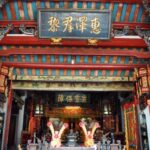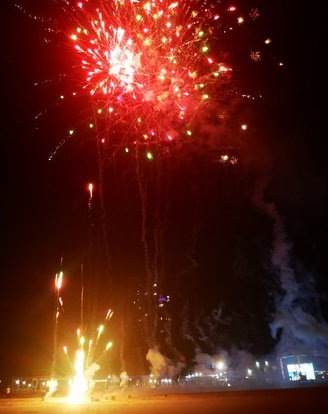Liugengtang is the top among the ‘four major ancestral halls’ in Panyu and a typical representative of rural ancestral halls in Guangdong folk. Liugengtang is located on ‘Lujiang Ningdao’ in Beicun and is the ancestral hall of the He clan in Shawan. It was first built in the year Yiyihai of Zhiyuan in the Yuan Dynasty (1275). Over hundreds of years, it has endured many disasters and been rebuilt repeatedly. The current appearance was expanded over a period of 17 years starting from 1700, the 39th year of Kangxi in the Qing Dynasty, according to the relevant specifications of official ancestral temples of Ming products. The entire ancestral hall has a high terrain in the north and low in the south. The main building covers an area of 3334.25 square meters. It is in a five-bay and five-entry layout, including the front gate, bell and drum towers, ceremonial gate, east and west side halls, worship courtyard, rear sleeping quarters, and auxiliary ancestral halls. Each building is laid out according to the functions required by ancient patriarchal etiquette and is arranged along the central axis and symmetrically expanded to both sides. It is grand and spacious. Its architectural layout, structure, and elegant and magnificent decorations demonstrate superb ancient architectural art. It reflects the excellent site selection and orientation in ancient feng shui theories. Opening hours: Open from 9:30 to 17:30 all year round. The specific business status is subject to the opening situation on that day.
Liugengtang
Liugengtang is the top among the ‘four major ancestral halls’ in Panyu and a typical rep[...]









